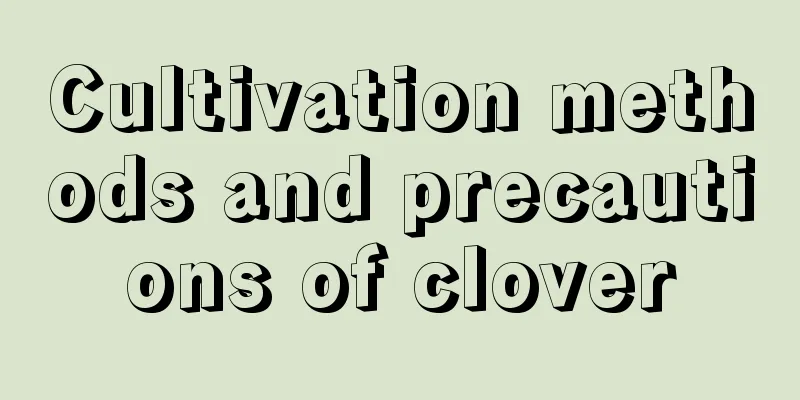How to grow peppers to get high yield?

|
Peppers are high in vitamin C and are not only an important vegetable in our daily diet, but also a key condiment to enhance the flavor of dishes. It is widely planted throughout our country and has significant economic benefits. However, low yield and poor quality are common problems. Let’s learn together how to grow peppers to achieve high yields. 1. Select strong seedlings for planting Pepper planting requires seedling raising before transplanting. After transplanting, the strong seedlings have a high survival rate, fast seedling establishment, and strong resistance to adversity, which helps to improve yield and quality. When raising seedlings, you should cultivate strong seedlings, and choose healthy seedlings when purchasing. It takes 50 to 70 days to raise seedlings in spring, and the seedlings have 7 to 8 true leaves; it takes 30 days to raise seedlings in summer, and the seedlings have 5 to 7 true leaves. The characteristics of strong seedlings are upright plants, stretched leaves, green leaves, thick stems, well-developed root systems, freedom from diseases and pests, and the first inflorescence has buds. The key to cultivating strong seedlings is to take advantage of low temperatures. Open-air seedlings should be sown when the temperature is stable above 15℃. Soak the seeds for 8 hours, wrap them with wet cloth to germinate, and sow them when 70% of the seeds are white. Rake the soil flat and fine, cover it with 0.5 to 1.0 cm of soil after sowing, water the seedbed thoroughly, and cover it with straw or film to retain moisture at low temperatures. Remove the covering material in time after emergence. Water the seedlings once every 5 days during the seedling stage. Weak seedlings can be watered with 0.5% urea solution. 2. Avoid excessive nitrogen fertilizer application Peppers like potassium and should avoid excessive nitrogen fertilizer. Excessive application of nitrogen fertilizer will cause the plant to grow too tall, delay flowering, cause flowers and fruits to fall, reduce yield, easily induce insect pests, and reduce the spiciness. Apply fertilizer reasonably and apply sufficient base fertilizer when planting, mainly farmyard manure, 3,000 kg of decomposed farmyard manure and 40 kg of triple compound fertilizer per mu. Ten days after planting, weak seedlings can be topdressed with 5 to 7 kg of urea or diluted manure water. 3. Spray "potassium dihydrogen phosphate + brassinolide" after pepper fruit setting After the peppers set fruit, apply 20 kg of triple compound fertilizer per mu. Spraying "potassium dihydrogen phosphate + brassinolide" foliar fertilizer once every 10 days for 2 to 3 times can increase the yield by 30% to 60%. Potassium dihydrogen phosphate promotes carbohydrate synthesis, improves quality, and enhances resistance to lodging and diseases and pests. Brassinolide improves photosynthesis efficiency, promotes root development, enhances stress resistance, protects flowers and fruits, coordinates nutritional balance, breaks apical dominance, delays leaf aging, and improves quality. 4. Avoid root damage during tillage The root system of peppers is shallow, underdeveloped, and has poor regeneration ability. Avoid damaging the roots during intertillage. The first intertillage should be done 10 days after transplanting. It should be shallow near the root system and slightly deeper far away. Intertillage should be carried out when the soil is dry to avoid soil compaction and root infection. 5. Pruning and branch cutting During the growth of pepper plants, retain 3 to 4 strong main branches, and each main branch retain 2 to 3 side branches. The remaining fruitless branches, overly dense branches, and leggy branches should be cut off. The branches below the main pepper should be removed as soon as possible, and the diseased leaves, old leaves, yellow leaves, and diseased fruits at the bottom should be removed. Reasonable pruning and branching can reduce nutrient waste, improve ventilation and light transmission, and increase yield. 6. Harvest as early as possible For peppers, mainly green peppers, they should be harvested as soon as possible after the fruits are ripe, so as to save nutrients, delay premature aging of the plants and increase yield. To sum up, pepper is widely cultivated in various parts of my country, with high nutritional value and good economic benefits. The yield and quality of peppers can be significantly improved by cultivating strong seedlings, applying fertilizers reasonably, tilling the soil, and pruning.
|
<<: How many days does it take for vegetables to sprout?
>>: How many days does it take for coriander to sprout?
Recommend
Precautions for repotting Jade Dew When is the best time to repot Jade Dew?
Jade dew is a succulent plant with a very transpa...
How to plant okra seeds
Okra seed planting time Okra likes to grow in a w...
Apple sowing and seedling raising method
Apple trees are deciduous trees belonging to the ...
How to prune potted mulberries? Pruning methods and technical points
When to prune potted mulberries The pruning of po...
How to grow blue column cactus to make it bluer
Blue Column Cactus Growing Conditions The blue co...
When is the best time to divide hydrangeas?
1. When is the best time to divide the plants? Hy...
When does African jasmine bloom?
When does it bloom? I can tell you for sure that ...
What should I do if the chrysanthemums wilt after I bring them home? The reasons and treatment methods for the chrysanthemums to wilt after I buy them
Why did the chrysanthemums I just bought wilt? Th...
Can Begonia bloom in winter?
Tip 1: Flower Pots and Soil The choice of flower ...
Does gardenia prefer acid or alkali? Can gardenia be exposed to the sun?
1. Acid-loving or alkaline-loving Gardenia is a p...
Is pineapple a fruit or a vegetable?
Is pineapple a fruit or a vegetable? Pineapple is...
What is the best season to plant ginseng fruit?
Ginseng fruit planting season and time The season...
The language and meaning of sunflowers
Flower language: Positive, sunny, loyal, passiona...
Watering time for flowers in winter
1. Flower lovers in the north Let's talk abou...
How to repot flowers? This way, the branches can be broken when the flowers bloom!
Why change the pot? Generally, if flowers are gro...









